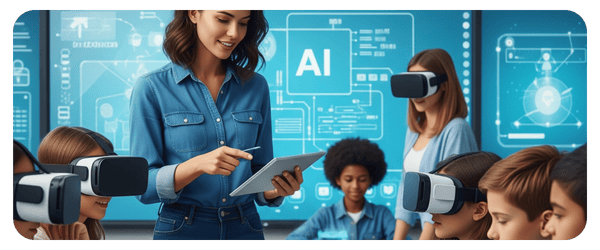School’s Out, But the Education Revolution Is In: Microschools & ESAs in Arizona, Florida, and Utah
Microschools and ESAs are reshaping education. Learn how families in AZ, FL & UT are leading the shift—and what it means for the future of learning.

School’s out, summer’s in full swing, and for most parents, back-to-school decisions are still months away. But that decision window closes fast—and this year, more families are asking a big question: stick with the same old system, or explore something that actually works for their kid?
That’s why the quiet momentum behind microschools and Education Savings Accounts (ESAs) is becoming hard to ignore. While families are busy with beach days and backyard BBQs, an education shift is unfolding—one that puts parents in control, gives students more flexibility, and frees educators to innovate.
Microschools - small, often multi-age learning environments that prioritize flexibility and community - are thriving in states that have embraced ESAs. These publicly funded accounts give families the ability to spend a portion of their child’s education funding on options outside of the public school system, from private tuition to tutoring to microschool enrollment.
“Microschools work because they center relationships and personalized learning. That’s what families are hungry for—and what kids thrive in. The funding shift just makes it possible at scale.” – Joy Meserve, COO of Changemaker Education
While the concept isn’t brand new, the pace of adoption is. With a surge of legislative support and growing dissatisfaction with the status quo, states like Arizona, Florida, and Utah are leading the charge, and transforming not just how kids learn, but who gets to decide.
Arizona: A Pioneer in Universal ESAs
Arizona was the first state to implement a universal ESA program, providing families with approximately $7,000 annually to spend on educational expenses, such as private tuition, tutoring, or microschool enrollment. That kind of flexibility has spurred a wave of microschools to meet demand, offering personalized alternatives to traditional public schools.
But with that growth comes complexity, of course. Some private schools have hiked tuition, making access harder for lower-income families and raising concerns about equity in this new ecosystem.
Florida: Expanding Educational Horizons
Florida's Personalized Education Program (PEP) and the Family Empowerment Scholarship for Students with Unique Abilities (FES-UA) have significantly broadened educational options. By enabling families to spend ESA funds on microschools and more, these programs have created a flexible, inclusive learning landscape that meets kids where they are.
Utah: Integrating Flexibility and Innovation
Utah's "Utah Fits All" Scholarship exemplifies the state's dedication to educational flexibility. This program allows families to apply ESA funds toward a range of educational services, including enrollment in microschools and individual public school classes. Such initiatives reflect Utah's proactive approach to integrating microschools into the broader educational framework, promoting innovation and accessibility.
All of that said, it’s not just these three states seeing change. Across the country, a new kind of classroom is taking root.
The Microschool Movement: A National Perspective
According to the National Microschooling Center, there are approximately 95,000 microschools nationwide, serving around 1.5 million students. These schools, often accommodating 10 to 15 students per teacher in mixed-age groups, offer intimate, highly customized learning experiences.
"Microschools aren’t a trend—they’re a return to what education should be: human-centered, flexible, and deeply connected to the real world." — David K. Richards, Founder & CEO of Changemaker Education
What sets microschools apart isn’t just their size—it’s their flexibility. With the autonomy to adopt innovative curricula, hybrid schedules, or specialized learning approaches, they’re uniquely positioned to adapt in real-time to students’ needs.
As a result, while Arizona, Florida, and Utah may be leading the way, the movement is far from regional.
Looking Ahead
The intersection of ESAs and microschools is reshaping American education by putting decisions back in the hands of families and sparking innovation in how kids learn. It's a growing signal that parents want options, students thrive with flexibility, and the future of education may be smaller, smarter, and more student-centered.
David K. Richards comments, “Arizona showed us what’s possible when families are given real choice. The explosion of microschools there proves that innovation happens fastest when local communities are empowered. And we’re here to help educators build this new education paradigm, one microschool at a time.”
For educators, entrepreneurs, and school founders, now is the time to lean in. Engage with families. Build flexible models. Advocate for policies that support choice. The next school year isn’t just a calendar flip—it’s a chance to reimagine what learning can look like.

Join the Education Revolution
Be part of a transformative movement that empowers learners and reshapes education for the better.


%20(7).png)

.png)